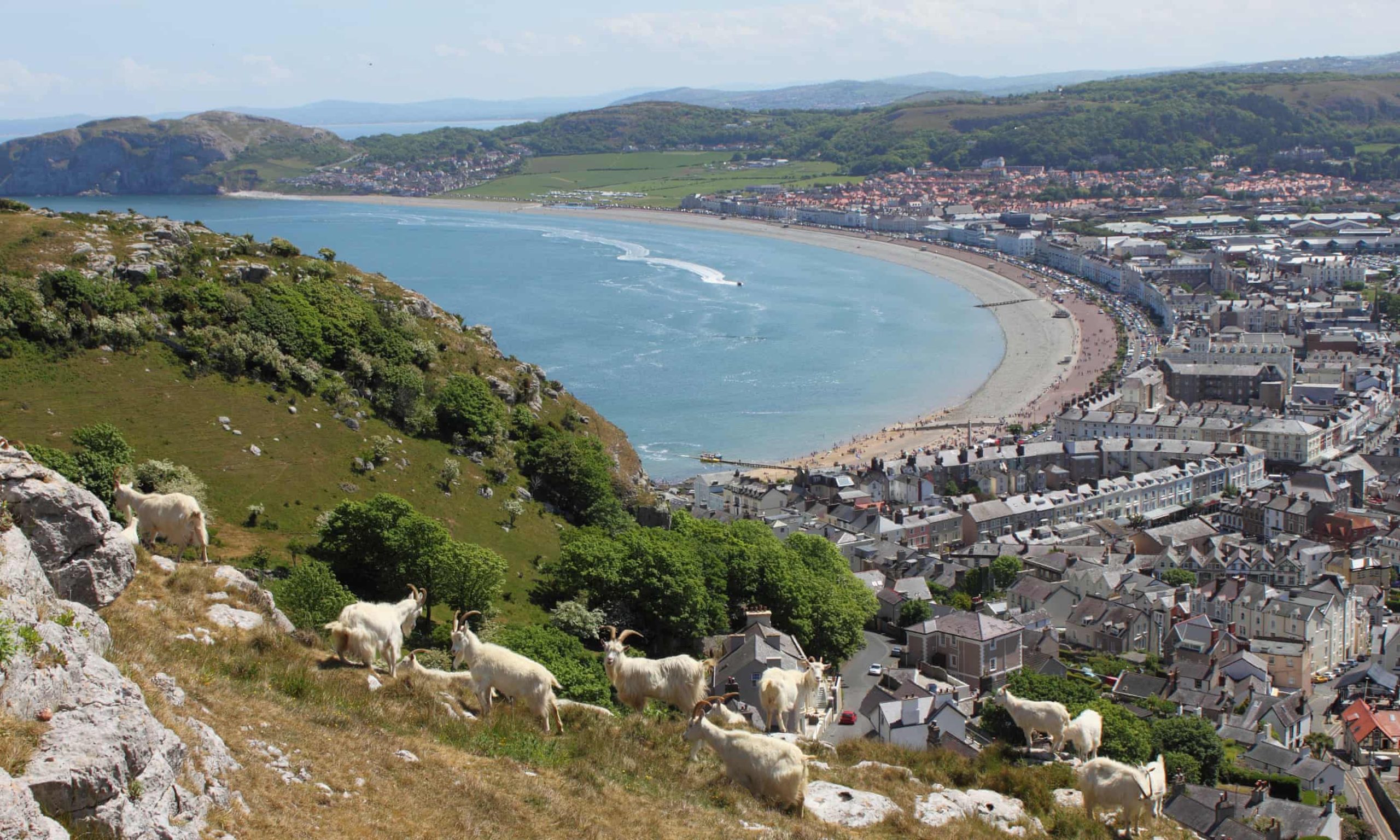
Inspiring views, pubs, solitude, family and community are all facets of what makes a great British place for our tipsters
50 writers on their favourite place in the UK
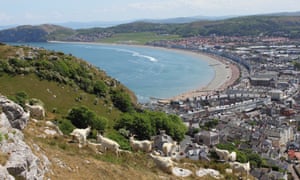
Winning tip: Great Orme, Llandudno, Conwy
A short, steep walk from Llandudno’s pier to the top of the Great Orme headland brings multiple rewards. The seaside resort is quickly left behind to reveal a peaceful landscape filled with possibilities. Walk among limestone pavements, and look down to notice the planned street pattern and evidence of ancient copper works. Pockets of wildflowers abound. Stroll steep cliffs to view soaring razorbills and kittiwakes. Spot local landmarks: the castle and estuary at Conwy, the straits separating Anglesey from the mainland. Watch the sun set from St Tudno’s, the 12th-century chapel. Descend to see wild Kashmiri goats and the remnants of a second world war practice camp along the shore. Britain in miniature.
Judith
Profile
Readers' tips competition: send a tip for a chance to win a £200 voucher
Climb Snowdon with the crowds

Most people head to the mountains to avoid crowds, but for an experience that encapsulates the UK at its best, why not embrace them and climb Snowdon on a sunny bank holiday. It will restore your faith in humanity. England & Wales’ highest peak attracts walkers of all persuasions: teenage charity hikers, families climbing their first mountain, retirees with decades-old backpacks. All exhausted, proud and politely taking it in turns to have a selfie on the crowded trig point. It’s also diverse; unlike on many UK peaks, not every face you see is white, and a mountain railway makes the summit accessible to all. The views aren’t bad either …
Kirstie Fagan
Gallery and cake, Isle of Skye

The mood changes from heavy clouds swirling menacingly overhead to sapphire blue clarity in the time it takes to consume one of the tasty homemade cakes and pots of tea at the warm and welcoming Ellishadder Gallery on Skye. The dramatic, brooding backdrop of the Quiraing, with its pinnacles, crests and buttresses, is framed in the windows, contrasting with the pretty, colourful garden where vegetables and herbs are grown to flavour delicious soups. Buy one of the owner’s expertly woven throws in subtle hues of blue, green and grey reflecting the splendour of this Hebridean isle and you have a small slice of heaven.
Carol Morris
Easdale Island, Highlands

This is the most magical place for families. A tiny slate island near Oban, it is car-free (if staying, you transport your luggage via wheelbarrow). There is the lovely Puffer bar/restaurant for refreshments, and a great arts centre with a surprising range of events for such a rural location. The World Stone Skimming championships every September draws the crowds, but the island is even more charming when normal service resumes – a great spot for fishing, wild swimming in a quarry and wildlife-spotting on the stony beaches and footpaths. To see dolphins, whales and the CorryvreckanWhirlpool, visitors can join a seafari tour, leaving from Easdale.
Claire
Birmingham’s Back to Backs
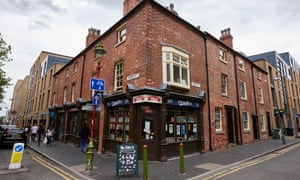
The UK to me means family and making the best of what you’ve got. I find all that in the 19th- and 20th-century working class homes at Birmingham’s Back to Backs (adult £9.50, child £5.25), restored and maintained by the National Trust. We’ve been coming for more than a decade, and the experience still enthrals everyone we bring. My 87-year-old father pictures his mum’s family of 10 living in these minuscule dwellings, playing in the courtyard and sharing primitive toilet facilities; my grandson can’t believe “glass eye-maker” was ever a profession; and I look forward to some 1970s and earlier confectionery in the sweet shop. The building of homes like these was banned in the 19th century – yet people still lived here into the late 20th century, with the last occupant, a tailor originally from St Kitts, leaving in 2001. How they evaded the city’s slum-clearing zeal is miraculous.
Stan Jones
Big Stone, Tatham fells, North Yorkshire
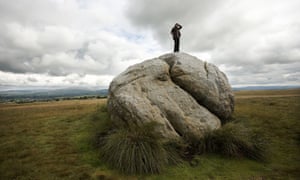
From this glacial erratic, also called the Great Stone of Fourstones, you can see the Lakeland pikes, the majestic three peaks of the Yorkshire Dales, the rolling moors of the Forest of Bowland, and over to Morecambe Bay, the Heysham power station and the Lune river winding through villages. The wind sweeps to distant turbines; curlews and lapwings call out as they ride the air currents. This is a vista that shows off our diverse geology and geography; you can stand on an erratic abandoned here 20,000 years ago and gaze at this panorama of northern splendour. A popular walk to the Big Stonestarts from the Slaidburn to Bentham road.
Melissa Bailey
Great loos at the Philharmonic pub, Liverpool

The Philharmonic Dining Rooms, opposite the eponymous concert hall, is a Nicholson’s pub with real Victorian grandeur and ornate decor of mahogany, glass and copper. It has perhaps the most beautiful pub toilets in the country, with lots of marble features. Opened at the turn of the 20th century, this must be one of England’s most remarkable pubs. It has a large range of craft brews and gins, too.
Liam
Wasdale Head, Cumbria
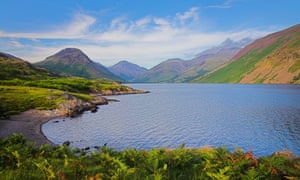
Many people consider this area the birthplace of British climbing, and I love following the trails once trodden by Victorian boots but now by synthetic soles. Beyond the inn and farms is an outdoor cathedral of many spires, Pillar, Kirk Fell and Great Gable. To stand beneath the often cloud-soaked summits gives such a feeling of permanence and reminds me how transient our difficulties are. Whichever route you take offers an arduous walk but rewards of achievement and breathtaking views – views that will remain long after our troubled times have made their exit.
Tim Spindler
Portencross, Seamill, North Ayrshire
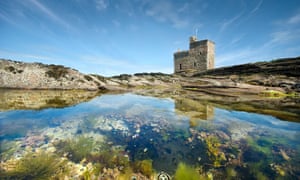
The coastal strip by 14th-century Portencross Castle is my favourite place in the world. I have been going ever since I can remember. The fortress stands firm, rising from craggy rocks. Quaint fisherman’s cottages sit adjacent, painted in soft pastels with nets and lobster pots littering the gardens. Sailboats and launches bob in the nearby harbour, painted in vibrant blues and reds that punctuate the otherwise soft, natural tones of the coastline. If you want to escape urban life, it’s the perfect destination.
Alex Kyrtsoudis
Grassmarket, Edinburgh
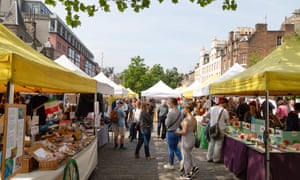
Every weekend I have the joy of running a stall in the historic Grassmarket. Rugby fans pack into cosy pubs for the Six Nations; tourists snap pictures of the Castle; thespians flock to watch street performers; and locals sit in cafes watching the world go by. Now a trendy hangout, the Grassmarket has glimpses of its dark past – it was used for public hangings and suffered a bombing raid by a Zeppelin airship in the first world war. Old tales (the woman who “woke up” after her hanging and was released is a favourite) are kept alive by locals and tour guides, but this historic quarter equally represents the modern age. With a range of traders, you can find the best street food in Edinburgh and sample local beers.
Lou Harkins
John Rylands Library, Manchester

I was a student at Manchester University, but it was only once I’d made Manchester my permanent home that I visited the John Rylands Library. This neo-Gothic masterpiece, which opened in 1900, is managed by the university as a free museum. It’s a compact and moody place, with arched corridors, high ceilings and hidden alcoves. Built by Enriqueta Rylands as a memorial to her industrialist/philanthropist husband (John Rylands, the city’s first multimillionaire, built up the UK’s largest textile business), this is one of the more unusual buildings in a city that led the industrial revolution and was the first industrialised city in the world.
John Hewitt
Gaping Gill, Yorkshire Dales

This hole in the Earth has remoteness, one of the UK’s largest waterfalls (the highest unbroken in England), and the largest underground chamber in the UK that’s naturally open at the top. An hour’s walk from lovely Claphamvillage, Gaping Gill is on the lower slopes of Ingleborough, the Dales’ second-highest peak, if you fancy some extra exertion. On bank holiday weekends a local potholing club will usually have set up a winch to lower you to the bottom for a fee. They also set up lights to help you enjoy this awesome natural wonder.
Ian Murray
Spurn Point, near Hull
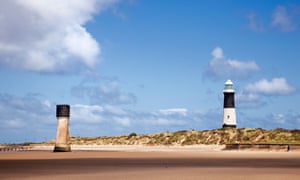
Solitude and peace are abundant here. The remains of cracked and broken wartime defences give way to the beauty of this ribbon of land. I just love the contrasts here. Open sea at one side, heavy and grey, with flotsam to search through; longer sand flats on the estuary side with birds feeding, circling and landing. Walk from the RSPB visitors centre, or catch the all-terrain bus to the actual point.
• discoveryorkshirecoast.com
Steve
Berwickshire coastal path

A seat on a train between Newcastle and Edinburgh is one of the most scenic places you can sit. Vast seascapes lead to the grand view of Berwick’s walled town, the point of the ritual crossing the border over the Tweed. Berwickshire is an obsolete Scots county named after an English town. Its coastal fringe is nothing less than magnificent. Go back and walk a bit of it in more detail from Cove to Pease Bay. Learn of fishwives looking out to the horizon for lost souls. Feel the wind in your hair. View harbours, banded cliffs, beaches – breathtaking round every bend.
• walkhighlands.co.uk
Kay Williams
Hastings old town

I never get tired of Hastings old town and the beach and fishing boats there. It is a vibrant, lively place. The High Street and George Street are filled with independent cafes, bookshops, fashion stores, art galleries and jewellers. The pubs are warm, welcoming and filled with historical echoes of the fishing and smuggling trade. Most pubs in the old town were used for smuggling, and stories of deceit, betrayal and death are kept alive by the local people who know the fascinating history. Any local will know the stories and every time they visit a shop or pub in the old town, they will see or feel a reminder of this never-forgotten past.
Rachel Marsh
Quiet art gallery, Cornwall
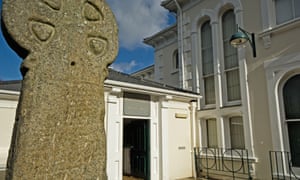
Penlee Gallery in Penzance offers much more than an escape from Cornish rain: the exhibitions consistently capture the spirit of Cornwall past and present, its landscapes and people. Set in gardens, it provides respite from the beach and complements coast path rambles. The collection of Newlyn School pictures changes regularly, and themed exhibitions offer rare opportunities to see artworks from the same school together that are normally scattered through public and private collections. It is small enough and quiet enough that you can take your time and experience the diversity of art inspired by Cornwall. The cafe and shop are worth a visit, too.
The Guardian

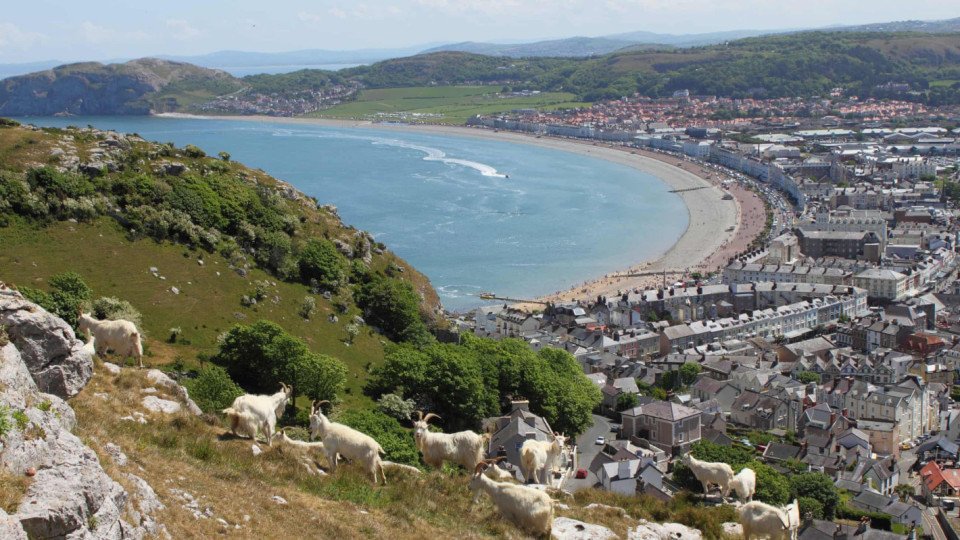









Leave a comment